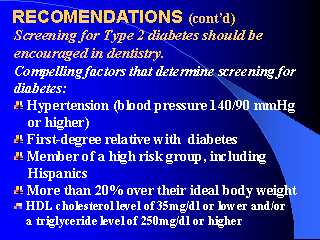|
|
|
|
front |1 |2 |3 |4 |5 |6 |7 |8 |9 |10 |11 |12 |13 |14 |15 |16 |17 |18 |19 |20 |21 |22 |23 |24 |25 |26 |27 |28 |29 |30 |31 |32 |33 |34 |review |
 |
Needs Assessment: Peripheral insulin resistance, impaired regulation of hepatic glucose production, and declining beta-cell function (eventually leading to beta-cell failure) characterize the pathophysiology of Type 2 diabetes. In addition to hyperglycemia, an abnormal lipid profile, particularly elevated triglycerides and low HDL-C, is commonly seen in patients with Type 2 diabetes. Though the goals of the treatment of Type 2 diabetes, to relieve symptoms and to prevent acute and chronic complications remains unchanged, an increasing knowledge and understanding of the pathophysiology of Type 2 diabetes and insulin resistance has led to completely new approaches to treatment. Treatment of Type 2 Diabetes: Diet and exercise, together with education and home blood glucose monitoring, form the cornerstone of therapy for all patients. Aerobic exercise should be encouraged, but patients starting an exercise program should be screened for coronary artery disease. If diet and exercise fail to achieve adequate glucose control, oral anti-glycemic agents should be added to the patient's therapeutic regimen. There is strong epidemiologic evidence that diet and exercise help prevent the development of Type 2 diabetes. It is now recommended that all persons above the age of 45 be screened for Type 2 diabetes. This includes measurement of a fasting glucose concentration at least once every three years. Patients at increased risk for the development of diabetes should be screened earlier and more frequently. These include:
|